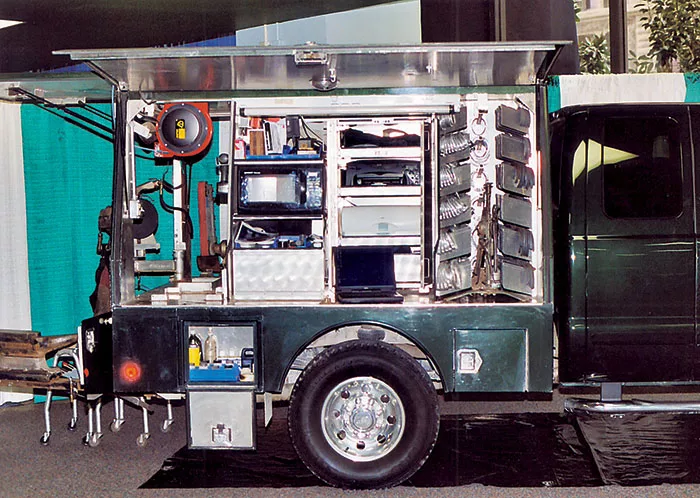American Farriers Journal
American Farriers Journal is the “hands-on” magazine for professional farriers, equine veterinarians and horse care product and service buyers.

Ninety percent of the horses that Rob Spencer shoes are laminitic or have other serious foot problems. His emphasis on therapeutic shoeing dictates the design and content of his rig.
“I cover a lot of miles to reach those horses,” he says. “That means I have to have with me, or be able to make, everything that I might need when I’m on the road. I don’t have the luxury of stopping back home to get anything.”
“Home” is Genoa, N.Y., his base when he works throughout the states of the Northeast. He also drives cross-country to the Versailles, Ky., area, where he and partner Eric Parsons own and operate the Equine Podiatry Center, a business they bought from nationally prominent veterinarian Ric Redden last November.
Since then, Spencer has put 40,000 miles on his 2002 Ford truck, and he expects to reach 70,000 miles this year. Covering that much ground, Spencerpays attention to his rig’s handling. “I used to be in a long-bed truck, but I moved to this short-bed because I like the tighter turning radius,” he says.

EVERYTHING IN ITS PLACE. The abundance of compartments and drawers beneath the single-wing doors of Rob Spencer’s rig make it convenient for the farrier to stay organized and to protect the equipment during travel.
The custom-made Stone Well box is longer than normal for a short-bed truck, giving Spencer more room for his shoeing tools and equipment. The box actually was mounted on his previous…